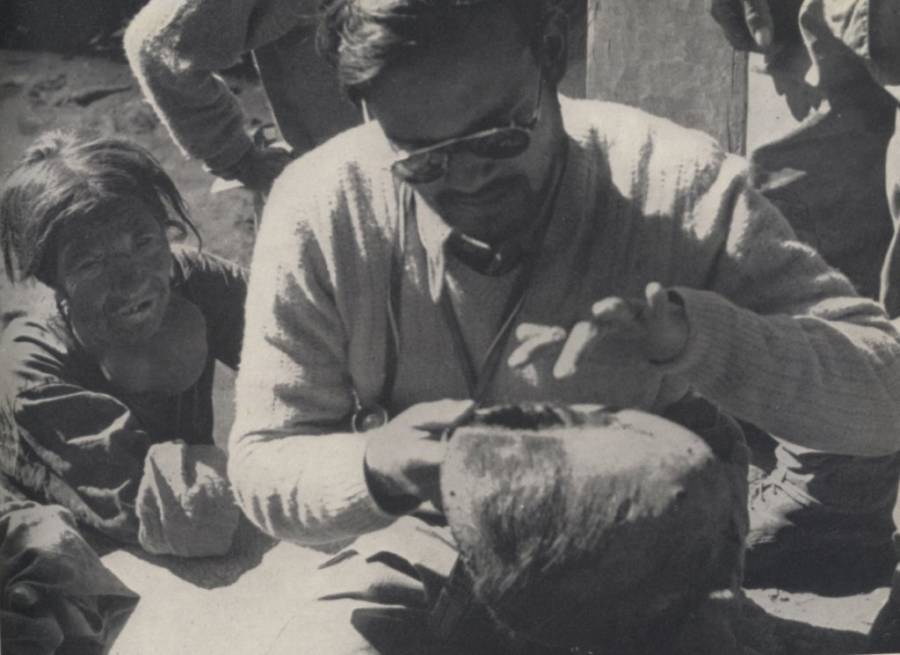Is The Pangboche Scalp Real?

John Angelo Jackson/Wikimedia CommonsDr. Biswamoy Biswas examines the alleged Yeti scalp uncovered at the Pangboche monastery during the 1954 Daily Mail expedition.
In 1954 — one year after Hillary reached Everest’s summit and near the height of Yeti mania — Britain’s Daily Mail financed a major expedition to Nepal in hopes of confirming a Yeti sighting. While the research team didn’t find much, they did come across a purported scalp, much like the one Hillary would study six years later.
Similarly to the Khumjung scalp, this one was found at a monastery in Pangboche, Nepal. Its hairs, ranging from black to brown to red, were analyzed with microscopes and then cross-referenced with samples from known animal specimens, including bears.
After completing this analysis, British scientist Frederic Wood Jones, an expert in human and comparative anatomy, was unable to identify the hairs’ origins — leaving believers with plenty of room for hope.
However, not all of Jones’ conclusions were good news for the Yeti community. Through microphotography and comparison with the fur of other animals, Jones ultimately determined that they did not come from a scalp. More likely, these were hairs from the shoulder of a coarse-haired, hoofed animal.
Despite these findings, however, the “scalp” remained a significant artifact at the Pangboche monastery. This was not the only alleged Yeti body part in Pangboche, however — nor was it the most fascinating.





